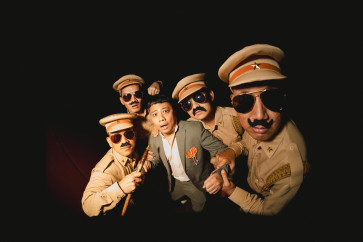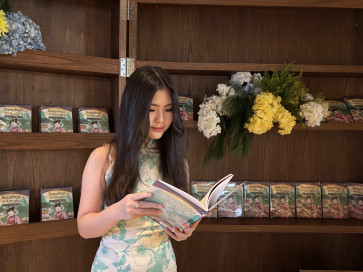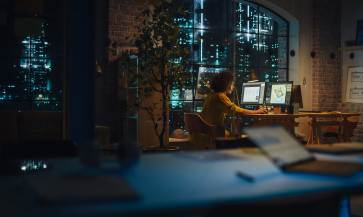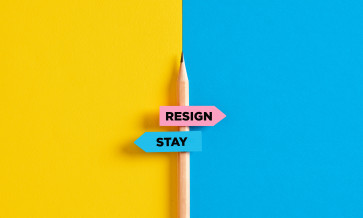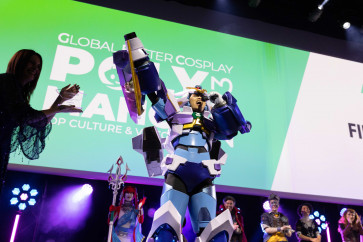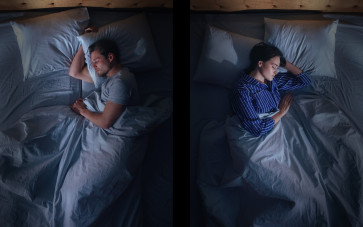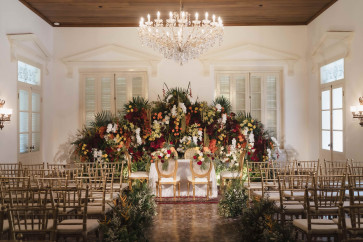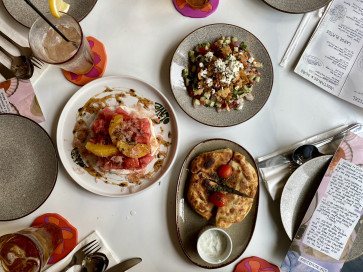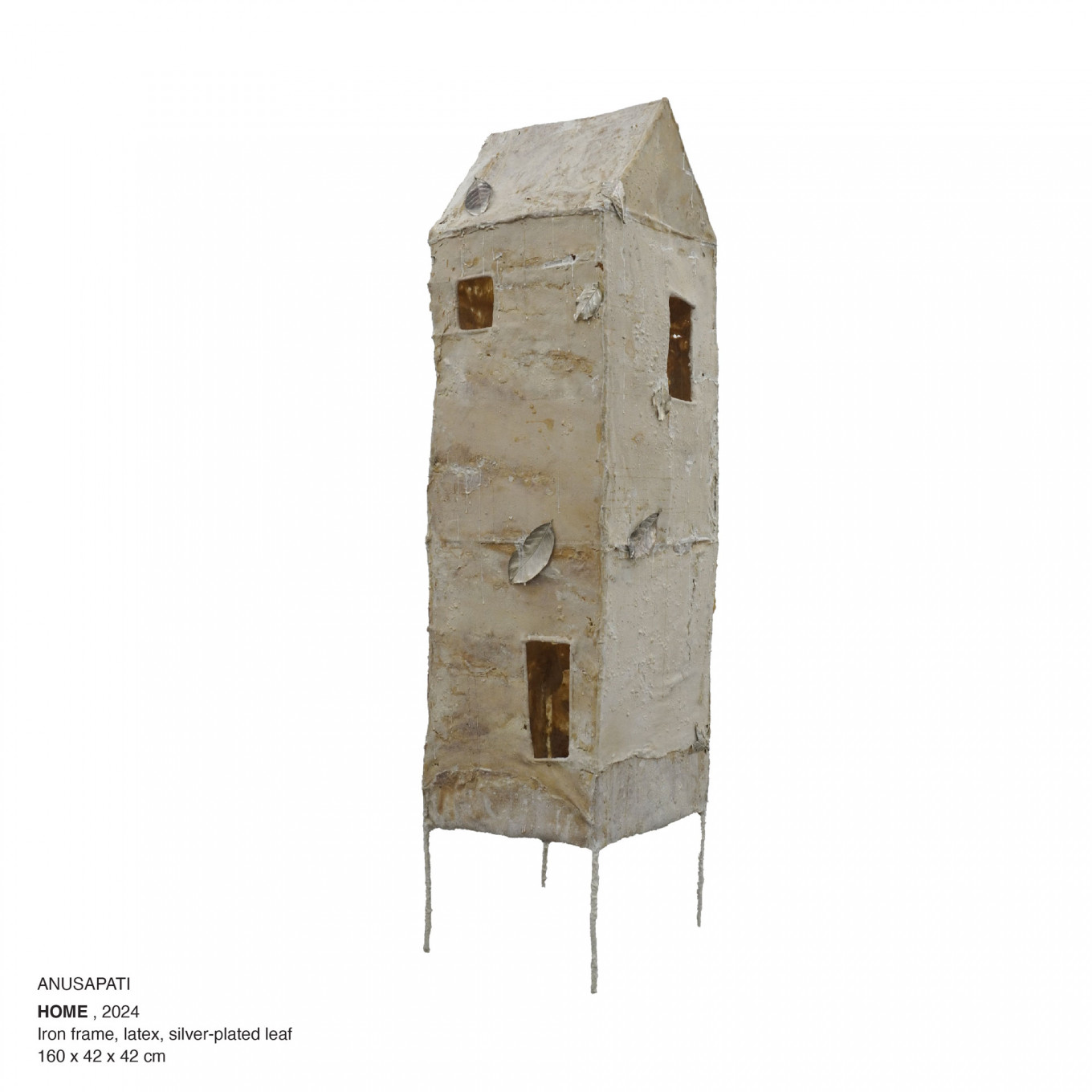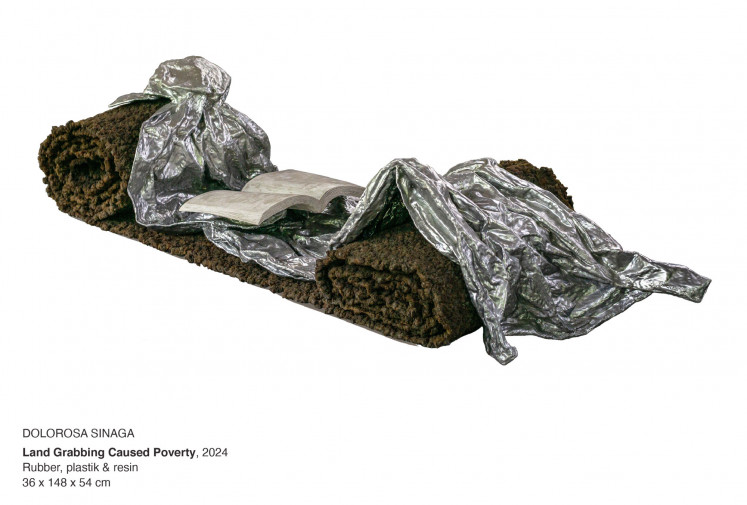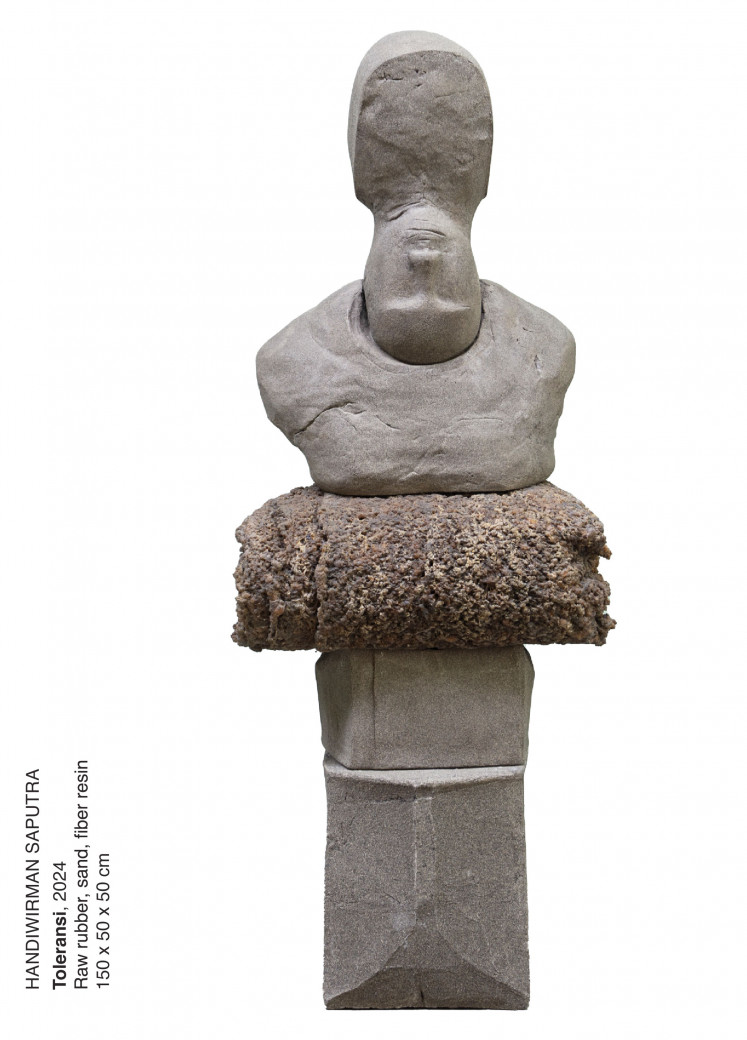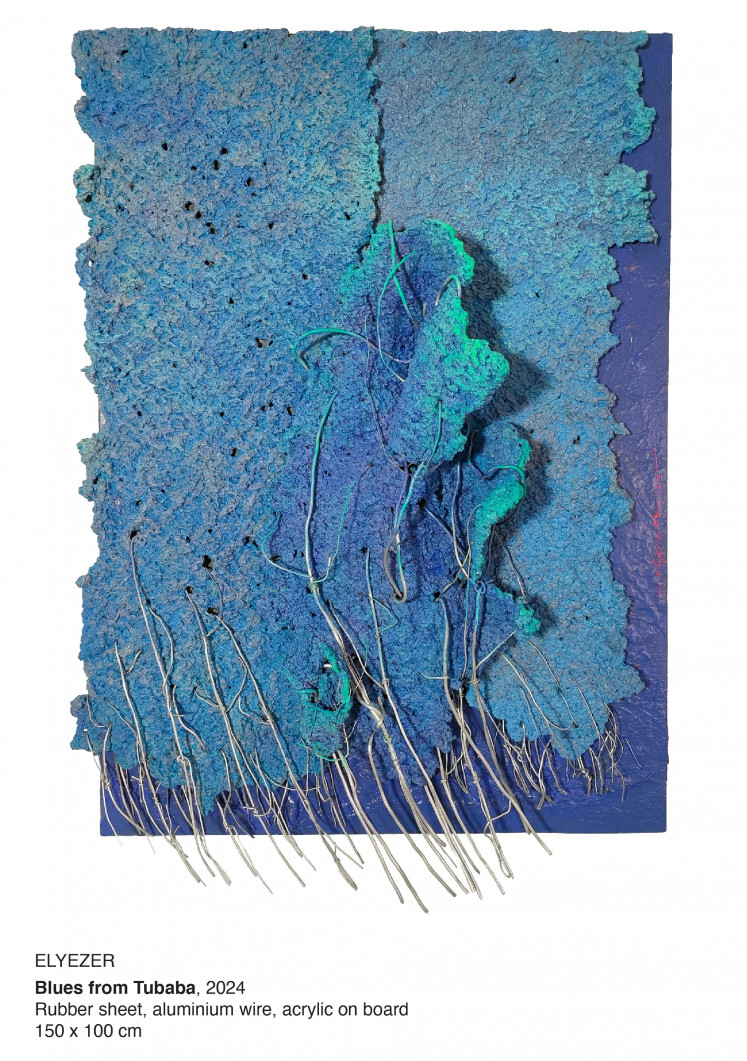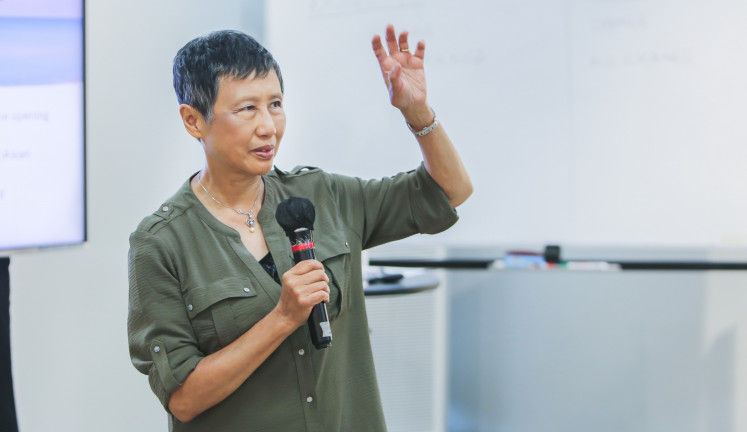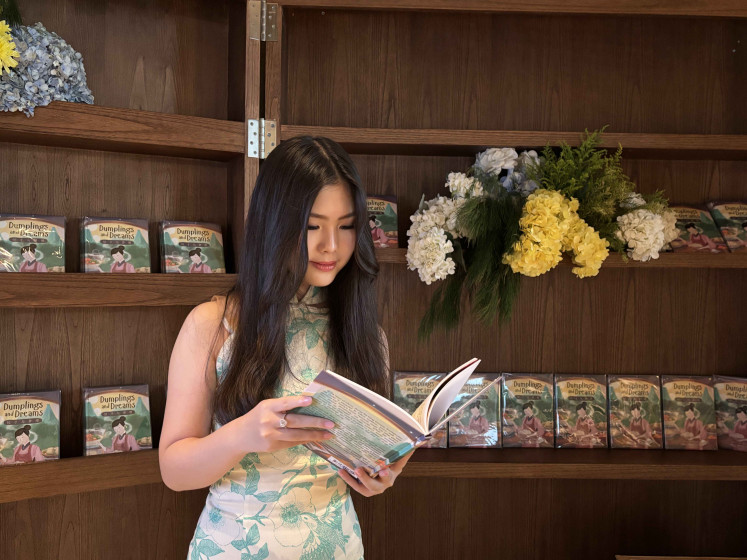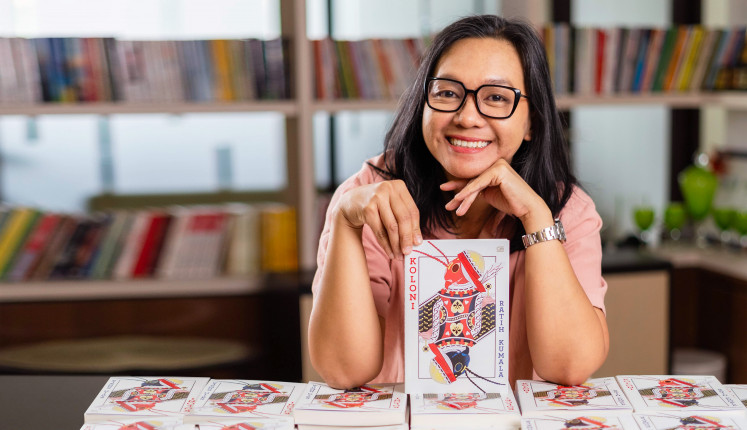(Courtesy of Jagad Gallery)
From the soles of your sneakers to the tires on your car, rubber is all around us. Though its myriad applications are certainly omnipresent thanks to its elasticity, the raw form of rubber is an uncommon sight, let alone as a medium for art.
Perhaps the relative novelty of rubber as an artistic medium alone could have drawn interest, but Jagad Gallery’s “Beyond Elasticity: Rubber and Materiality” exhibition offers contemplation on how Indonesia is still grappling with the effects of colonization, even decades after independence.
Running until June 30, the exhibition is the result of a collaborative residency program between Jagad Gallery and Sekolah Seni Tubaba in Lampung’s West Tulang Bawang regency, or “Tubaba”. Participating artists were challenged to explore the possibilities of rubber’s use in art, with an end goal of raising awareness about the material and its potential.
Read also: Belief in regeneration: Teater Keliling preserves dramatic arts for half a century
Exploitation to exploration
(Courtesy of Jagad Gallery)
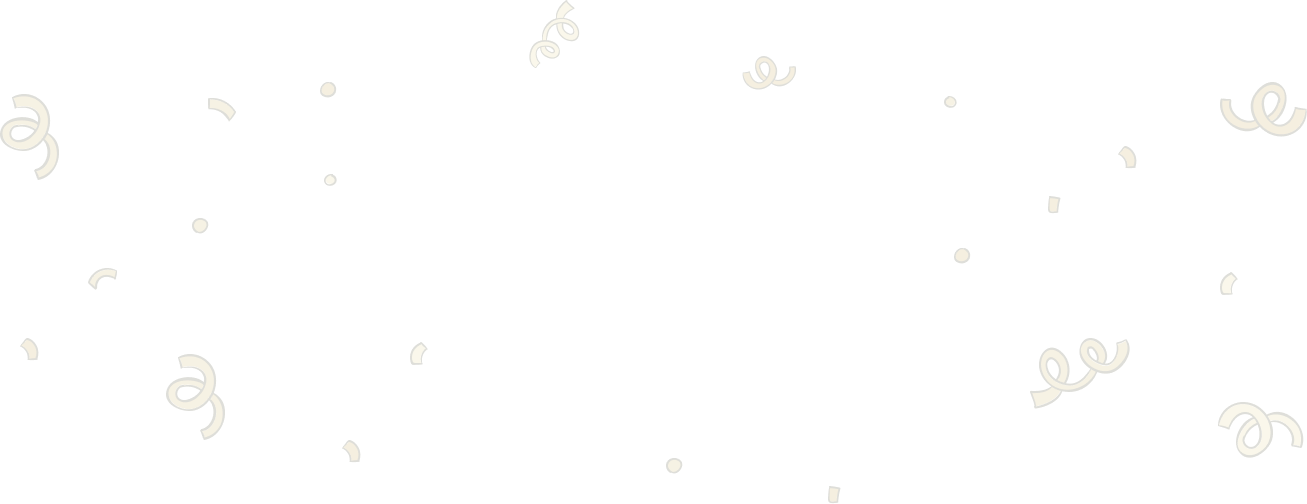
Thank you!
For signing up to our newsletter.
Please check your email for your newsletter subscription.
Overt, pointed and at times literal interpretations of the plight of Indonesia’s rubber farmers are par for the course.
Elyezer’s Winner’s Journey, which prominently features overlapping, crisscrossing tire treads, is a commentary on how the tire industry, which consumes more than 70 percent of global rubber production, constantly sees increasing prices while the smallholders that make up the majority of producers are saddled with fluctuating market rates.
Agus Suwage’s Jejak Getah, an oil painting accompanied by rubber typography of the numbers 1864 and 2024, seemingly calls to mind phantoms of both the past and present in its observation of how today’s farmers and their counterparts 160 years ago never prospered from their own lands.
(Courtesy of Jagad Gallery)
The open book perched on top of a crumpled metallic shape in Dolorosa Sinaga’s provocatively named Land Grabbing Caused Poverty purportedly speaks of open secrets, with the powers that be being powerless to act.
Commodities are inextricably linked to the country’s society, politics and economy. Suvi Wahyudianto’s multimedia installation Seroja Mengalir Sampai Jauh (Lotus flows away) centers on a military veteran with PTSD from his time in East Timor, while Maharani Mancanagara’s Apostles of Enlightenment #1 presents illuminated Caucasian figures on a rubber sheet, reminiscent of wayang kulit (leather wayang) protagonists in a colonial tale of commodities.
(Courtesy of Jagad Gallery)
Beyond the blatant commentaries, exploratory approaches are also on display. Sculptures like Handiwirman Saputra’s Toleransi (Tolerance) and Anusapati’s Home use rubber as a medium rather than a message, though of course, the interpretive nature of art allows the viewer to draw their own conclusions.
Read also: A whole new world: Desmonda Cathabel’s journey from Jakarta to the West End
Challenging conventions
For its part, the exhibition acknowledges the unconventionality of utilizing raw rubber sheets as a medium, rough and uneven with none of the characteristics one would associate with latex, yet also questions the conventions of Western-centric views of art.
Indonesia’s own understanding of its modern and contemporary arts is of course influenced by Western theories and discourses, as evidenced by the dichotomy of seni rupa murni (fine art) and kriya (craft) in the archipelago’s education system, despite its own distinct history of art movements.
In his curatorial statement, Asmudjo J. Irianto notes how raw rubber is not considered a medium in the specific conventions of modern art, such as paint and canvas is to painting and marble and bronze to sculpting.
(Courtesy of Jagad Gallery)
With established mediums, their identities have been shaped and accepted, even those that are hierarchically perceived, such as how some might view oil paintings and marble sculptures as more prestigious compared to watercolors and resin figures. At the same time, established mediums can also lend distance between artists and their subjects, while more specific materials can have a more direct, personal connection.
The issues surrounding rubber have been made palpable by the artists of Jagad Gallery unearthing and reinterpreting them. But at the end of the day, Asmudjo says that the role of these artworks is not to solve the problems at hand, but rather spark conversations and contemplations.
“The artists here display their work as a form of reflection and criticism. Art is never a report and not a story, but rather contains criticism,” he says.
If anything, the nature of rubber itself is perhaps an apt description of its enduring presence for the past 160 years. Beyond elasticity, it is also resilient, which perhaps explains why conversations will always snap back to it.
Read also: Pre-loved is the new new: A tale of style, sustainability and luxury
This article is part of The Weekender, which comes out on the Saturday edition of The Jakarta Post. It offers a variety of lifestyle and culture articles aimed at enriching your reading experience. Subscribe
here to get access to the Saturday edition and all other premium content from the Post.





